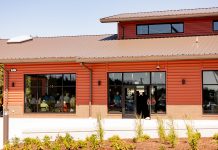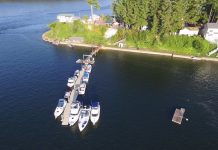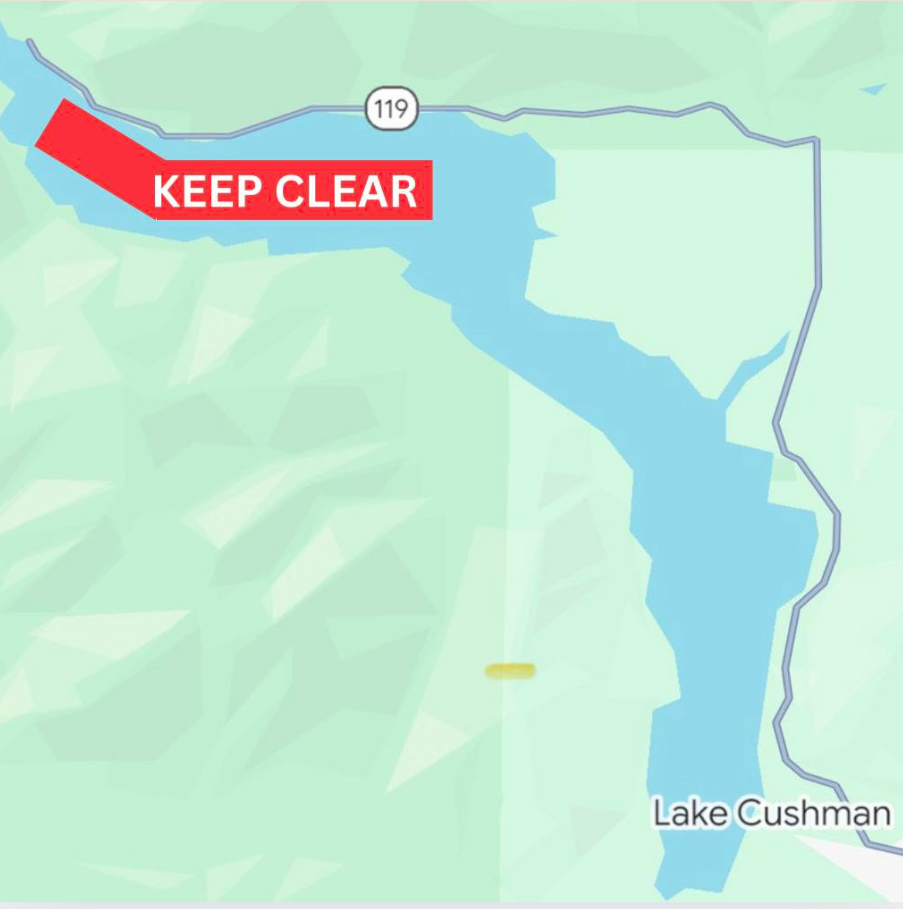Submitted by Public Information Team
Estimated size: 923 acres
Containment: 10%
Start Date/Time: 07/06/2025 9:42 PM
Area of Origin: North side of Lake Cushman near Mount Rose in Olympic National Forest, Hoodsport, WA
Cause: Human-caused
Structures Damaged: 0
Update: Containment decreased due to increased fire growth; however firefighters are making progress protecting values at risk. Firefighters are not able to build fireline directly on the fire’s edge where it is burning in heavy timber in steep terrain. Most of the recent growth has been lateral due to rollouts, where burning vegetation rolls downhill, and burn upslope. Indirect tactics are most effective in this terrain. Firefighters are using indirect tactics and point protection to protect values at risk where they can do so safely and effectively.
Handcrews continue preparing the lower Staircase trails to be used as fire lines to protect park infrastructure. Crews and heavy equipment are reducing fuels along Forest Road 2451 to use as a potential control line. Crews and heavy equipment are removing hazard trees and brushing on Forest Road 2419 to protect the Lake Cushman residential area.
Fire Behavior: The Bear Gulch fire continues to spread into the Skokomish Wilderness and Olympic National Park. It is creeping, smoldering, and backing with isolated torching. The fire is burning in extremely steep terrain.
Weather: Today will be warm and dry, with clear skies when the marine layer lifts mid-morning. Expected temperatures in the low 70s. Onshore flow continues to moderate humidities which continues to help moderate fire behavior. A warming and drying begins Sunday.
Smoke: Smoke may be more visible and there may be occasional smoke in the afternoon as the temperature rises and humidity falls. The communities of Hoodsport, Potlatch, and Skokomish should expect intermittent periods of smoke. For current smoke reports on the fire, please visit https://fire.airnow.gov
Lake Usage: When weather and cloud cover allow, aircraft will continue to use the north end of Lake Cushman for dipping water for fire suppression. Please continue to keep the north end of the lake clear from boating and other recreational uses. If aircraft approach the lake, give them space for firefighting operations.
Olympic National Forest Closures: USDA, Forest Service, Olympic National Forest Order No. 06-09-25-04 for the Bear Gulch area is in effect. NF-2400 is closed at mile marker 10.5, at the junction of N. Mount Church Drive and NF-2400. This closure on NF-2400 includes access to day use, trailheads and other sites beyond the closure point. NF-2419 is closed at the intersection of NF-2419 and NF-2400 with barricades in place. This includes the Upper and Lower Mt. Ellinor trail system. The Upper Big Creek Loop, leaving from Big Creek Campground is closed. Big Creek Campground remains open. For more info on closures and fire restrictions visit https://www.fs.usda.gov/r06/olympic/alerts
Olympic National Park Closures: Staircase Trailheads and Campground; Northfork Skokomish River Trail from Staircase to Flapjack Lakes Trail junction; Wagonwheel Lake Trail; Shady Lane Trail; Four Stream Trail; Slide Camp and Wagonwheel Lake wilderness campsites; and Skyline Ridge Trail from Lake Beauty to Low Divide Camp. For more info on closures and fire restrictions visit https://www.nps.gov/olym/planyourvisit/fire-conditions-and-updates.htm
Evacuation Levels: While there are no evacuation orders currently in effect, below is a reminder of how to prepare for an evacuation incident:
Level 1 – READY: Prepare a go kit for you, family, animals. Clear areas around your home in advance. Know your escape routes.
Level 2 – SET: Have your go kit on hand and ready. Ensure you, your family, and animals are ready to go at a moment’s notice.
Level 3 – GO: Grab your go kit. Load your family and animals and leave.
Air Space Restrictions: There is a Temporary Flight Restriction (TFR) in place over the fire. Any unaccounted-for aircraft, including drones, puts aerial firefighting resources and lives at risk. If you fly, we can’t. All firefighting aircraft must be grounded if unmanned aircraft or drones are operating near the fire.





















































